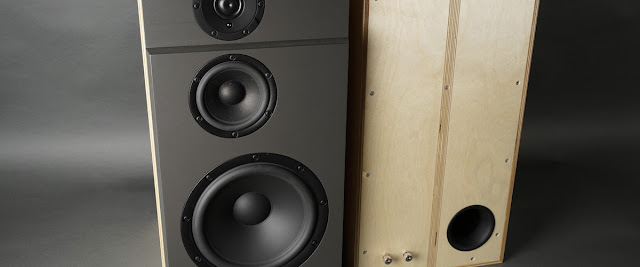Modding the NISSEI TR-35 VU Meter Part 1.
I really like VU meters and I could not stop my self from buying a bunch of NISSEI TR-35, a cheap little meter made in Taiwan by Nissei Sokki Co. There are Chinese copies of this meter and the ones from Taiwan is supposed to be of better quality. The images below in one example of the originals vs. the even cheaper counter freight copies.
The technical specifications of these meters differ a bit on the Internet and I could not find anything tangible on the Nissei Sokki web page. A sensitivity of 180uA +/-10% at 0dB/100% seems to be correct. My copies measure 0dB/100% at 191uA. DCR at 650 +/-10% also seems correct. I measured 651 Ohm. 500uA is often listed as max but I did not measure max.
It seems like these meters are sold with both light bulbs and LED. Mine came with a LED listed as "warm white" but it is everything but warm white. This post will be about replacing the awful stock LED and in the process also demonstrate how the face plate can be replaced.
I had seen pictures of this meter with blue and green LED lights so there must be a way to open up the case. I searched the net but came up short, until I stumbled upon Bobs page "Custom EAS Receiver". Bob had a couple of pictures where he showed how the face plate could be replaced so Bob must know how to open up the case right? I exchanged some emails with Bob before I made my first try. It is not easy but far from impossible. I am documenting it in detail here since I had such a hard time finding the information myself.
You will need something sharp, stiff and a couple of cm long, I used an X-acto-blade.
Use the blade to get in-between the back and front piece of the housing, be careful.
Carefully pry and the front piece (with the plastic glass and adjustment cam screw) will pop of the back piece (make sure you don't lose the adjustment screw and that you prevent the inside of the plastic glass from getting dirty).
The face plate sits in-between the font and back piece of the house. It was stuck agains the back piece with some glue. First remove the holding the movement and...
Be very carful when you pry the face plate loose. Make sure you don't damage the needle or the movement in the process. The LED and a piece of white plastic at the top of the housing can now bee seen. The piece of white plastic is a reflector and some residue of the glue holding it in place was also stuck to the front plate.
The LED is soldered to two pieces of sheet metal each forming a small tube. The end of the tube is forming the solder lug peaking through the back piece of the housing. The ones to the LED is the outside pair. Use a pair of nippers and carefully push from side to side. The tubes should come loose from the house and start moving towards the front of the housing (try to carefully pinch the tubes to a smaller radius from the front if they are totally stuck).
Make sure the LED is not damaging the needle or the movement in the process. You might have to carefully move the needle and movement out of the way while removing the LED and the two metal tubes out of the housing. Once again, be CAREFUL.
With the LED loose you can now enjoy its warm white light. ;)
And this is what it look like in the dark agains a white paper. It was fed with 3V, 10 mA and is looking colder in real life (my iPhone might have done some white balance correction).
It can be compared to this warm white LED (2700-3000K, 3.0-3.6V, 10000 mcd@20mA). It is looking warmer in real life (once again tripped up white balance by my iPhone).
But You might not want white backlight at all? You are free to choose whatever you want. I wanted amber but only had this yellow (585 nm, 2.0-2.6V, 8000 mcd@20mA)...
And this orange (605 nm, 1.8-2.4V, 2500 mcd@20mA) in the bin.
Amber is suppose to be somewhere in between. I finally picked the yellow one.
These LED where all clear case and generated quite some hot spots as can be seen on the white paper in the dark.
I used a Dremel and some 1200 grit sanding paper to diffuse the case and light.
And no more hot spots...
The distance between the metal tubes the original LED is soldered to is 22 mm and the diameter of the tubes are 2-3 mm. I took a piece of scrap DMF and drilled two 2.5 mm holes 22 mm apart. I now had a simple but functional soldering jigg.
Note what way the nod and cathode is pointing at the original LED.
Desolder the original LED from the metal tubes (now stuck in the soldering jigg). And solder the new LED in place (make sure the anode and cathode is positioned correctly). I used helping hand to keep it in place.
To put it all tighter is just a matter of reversing the process of taking it apart. This is what it looks like with the new replacement LED in place.
And compare it to the stock "warm white". I know witch one I prefer...
Now we only need a way to drive this VU-meter. That will be the subject of the next post...































